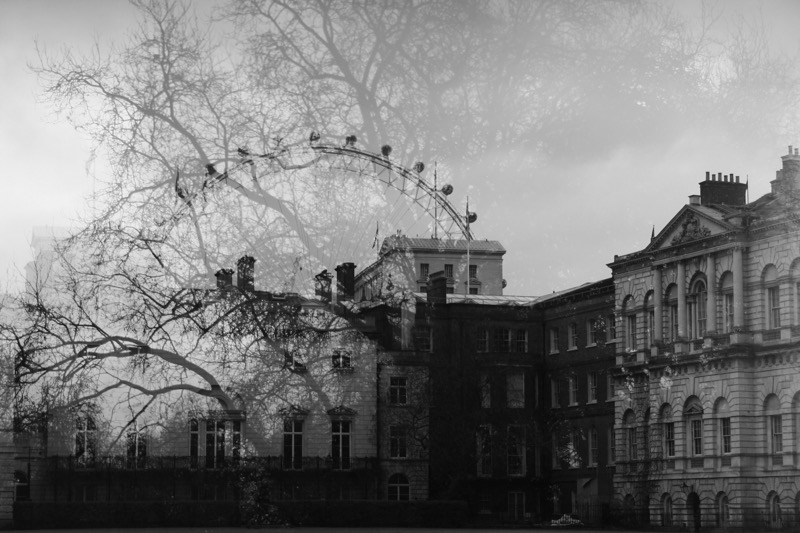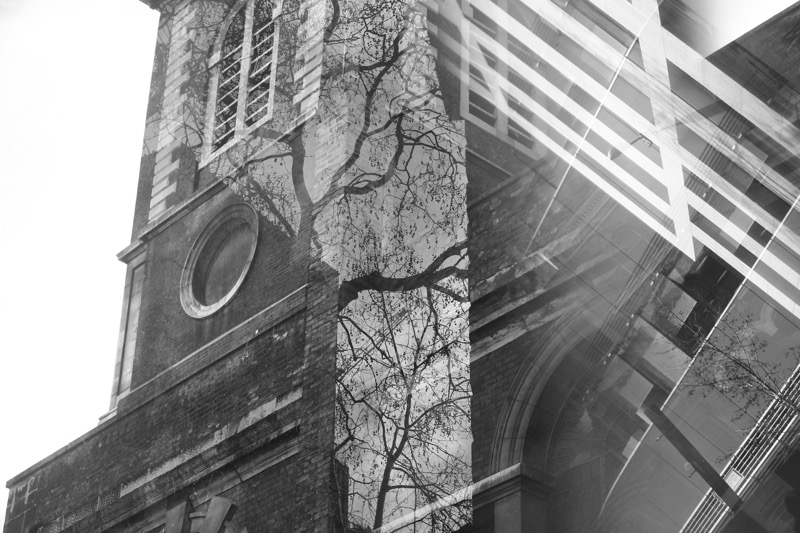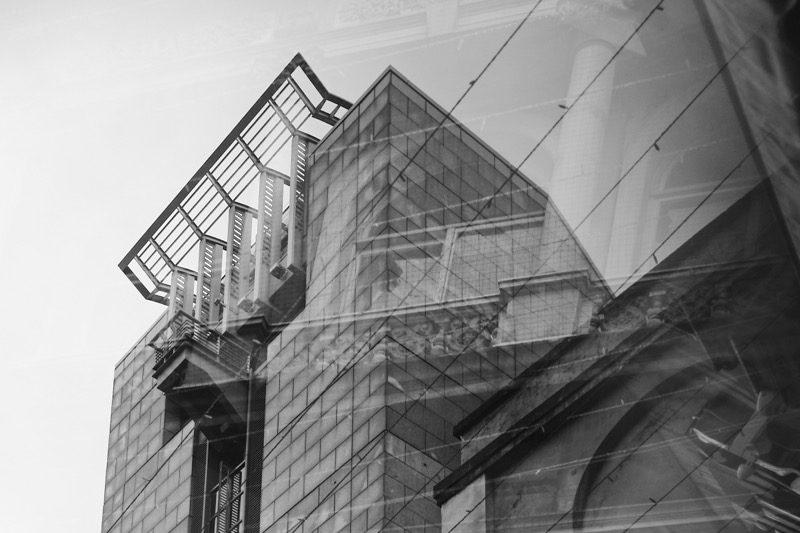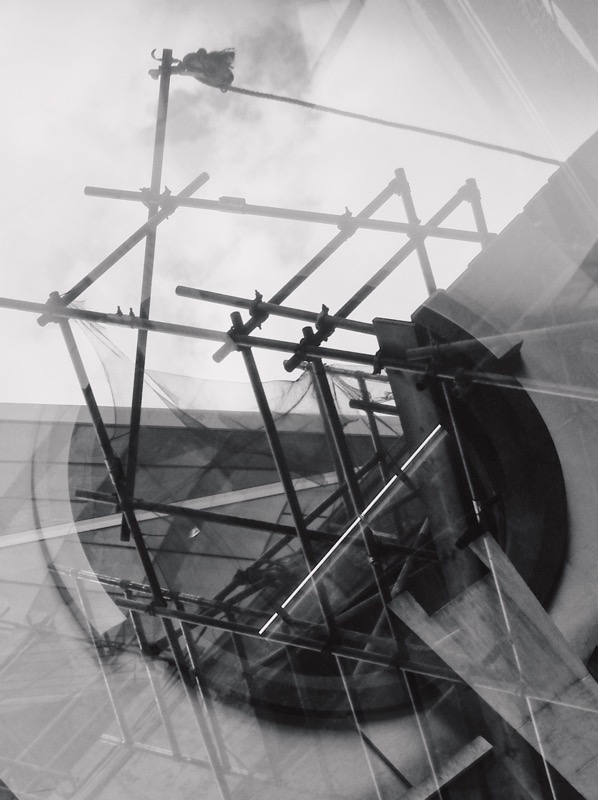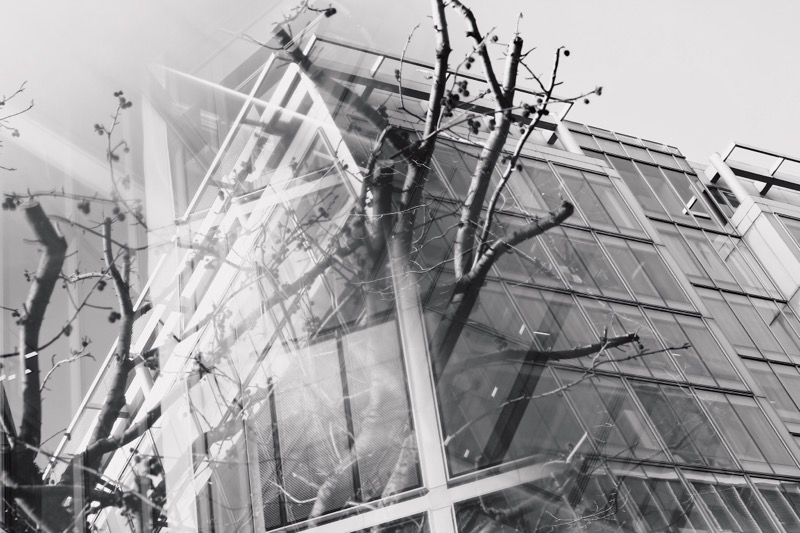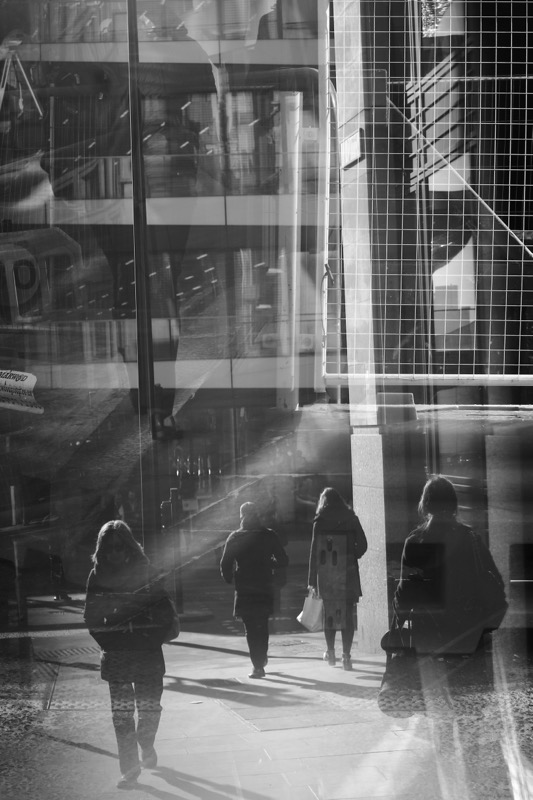City Studies. London

Born in the city, photography offered a new way of preserving the visible, a way that could exclude the artist’s personal interpretation and come close to ‘objectivity’. So there were two fundamental ideas about the possibilities of this new invention: it was a means to capture reality as accurately as possible, and it was a means to create an artistic image; both have remained, in conflict and coexistence, throughout the continuing history of photography.
In a series of photographs taken on the streets of London, M. Smith connects them, intricately and inextricably.
First, we have a documentary fixation, yet it is freed from the set point of view inherent in urban architectural photography. The fact is that when designing an urban space, the architect, or better defined more broadly, the urban planner, imagines in advance what this space will look like. Architectural photography by its own means captures and recreates this invented look, ideas drawn onto the sky.
To see the city outside of this task — unexpectedly, as if for the first time — is no easy feat. There have been and still are various attempts to solve this problem: one can recall following the color that turns the city into an almost abstract space (Saul Leiter) or optical manipulations that return simple forms to complex structures (Hiroshi Sugimoto). Marina Smith, using the dichroic cube prism lens — a lens that allows you to see one object in different planes — destroys the hierarchy of the view that the architecture dictates, fixing the documentary collages that her optics create. With this method, the work of the author takes place after the image is made, and consists in choosing the most expressive frames: documentary photography in its purest form.
The layering creates images that accurately convey the state of a person in a metropolis. Houses, street panoramas, passers-by both human and non-human, trees, the sky and all its weather merge into one stream, permeated with light and rhythm. The collage-technique is rooted in photography, but has its own characteristics, the main of which is the ideology. Using a collage, the photographer always wants to convey something that is relevant to the world beyond the frame. The combination of different images could have political reasons, for example, to illustrate the ‘brave new world’ as in the Soviet photobooks of the 30s or in some photographs by Alexander Rodchenko, or to be in line with artistic trends, such as the surreal collages of Laszlo Moholy-Nagy.
In these documentary collages, the place of the ideological is taken by the sensual: there is no other reason than desire, to convey the special music and beauty, the city’s most potent and timeless reality.
In a series of photographs taken on the streets of London, M. Smith connects them, intricately and inextricably.
First, we have a documentary fixation, yet it is freed from the set point of view inherent in urban architectural photography. The fact is that when designing an urban space, the architect, or better defined more broadly, the urban planner, imagines in advance what this space will look like. Architectural photography by its own means captures and recreates this invented look, ideas drawn onto the sky.
To see the city outside of this task — unexpectedly, as if for the first time — is no easy feat. There have been and still are various attempts to solve this problem: one can recall following the color that turns the city into an almost abstract space (Saul Leiter) or optical manipulations that return simple forms to complex structures (Hiroshi Sugimoto). Marina Smith, using the dichroic cube prism lens — a lens that allows you to see one object in different planes — destroys the hierarchy of the view that the architecture dictates, fixing the documentary collages that her optics create. With this method, the work of the author takes place after the image is made, and consists in choosing the most expressive frames: documentary photography in its purest form.
The layering creates images that accurately convey the state of a person in a metropolis. Houses, street panoramas, passers-by both human and non-human, trees, the sky and all its weather merge into one stream, permeated with light and rhythm. The collage-technique is rooted in photography, but has its own characteristics, the main of which is the ideology. Using a collage, the photographer always wants to convey something that is relevant to the world beyond the frame. The combination of different images could have political reasons, for example, to illustrate the ‘brave new world’ as in the Soviet photobooks of the 30s or in some photographs by Alexander Rodchenko, or to be in line with artistic trends, such as the surreal collages of Laszlo Moholy-Nagy.
In these documentary collages, the place of the ideological is taken by the sensual: there is no other reason than desire, to convey the special music and beauty, the city’s most potent and timeless reality.
